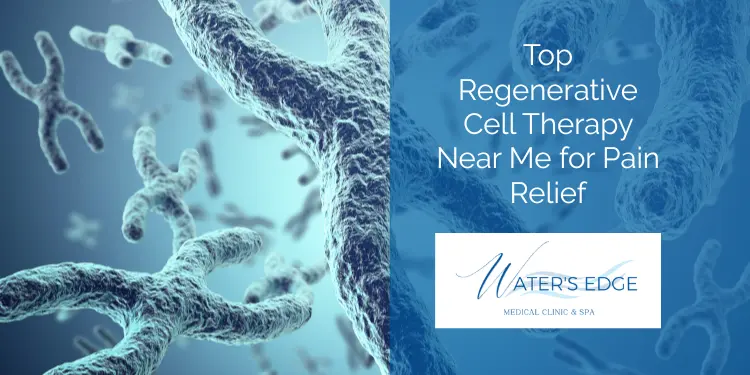Dealing with ongoing pain can really impact your daily life, making even simple tasks feel like a huge effort. More and more individuals want solutions that help them feel better—without pills or going under the knife. Luckily, there’s a modern approach gaining attention: regenerative cell therapy near me. This treatment aims to help your body heal itself, offering a different path to feeling better. Let’s explore what this therapy involves, how it works, and if it might be a good fit for you.
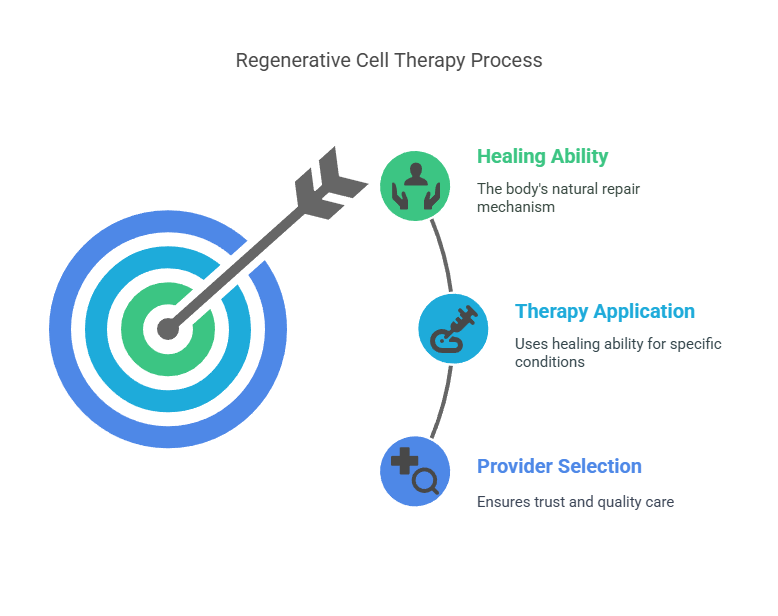
Key Takeaways
- Regenerative cell therapy uses your body’s own healing ability to fix damaged tissues and reduce pain.
- It’s often used for things like joint pain, arthritis, and nerve issues, providing a non-surgical option.
- To find a trusted regenerative cell therapy provider near you, check their experience, reviews, and available treatments.
What Is Regenerative Cell Therapy and How Does It Work?
Regenerative cell therapy is becoming a popular option for people seeking pain relief. It’s an alternative to more invasive surgeries or treatments that only provide short-term relief, like steroid injections. But what exactly is it, and how does it work?
At its core, regenerative cell therapy aims to repair damaged tissues in the body using your own cells or cells from a donor. Rather than simply hiding the symptoms, the goal is to fix what’s actually causing the pain.
Here’s a simplified breakdown of how it generally works:
- Cell Source: Cells are harvested. These can be your own cells (autologous) or from a donor (allogeneic). Common sources include bone marrow, fat tissue, or even blood.
- Processing: Once collected, the cells are refined in a lab to isolate and concentrate the regenerative components. This might involve separating specific cell types or preparing them for injection.
- Injection: The concentrated regenerative cells are carefully injected directly into the affected area. The idea is that these cells will then stimulate the body’s natural healing processes.
- Regeneration: Once injected, the cells release growth factors and other substances that help to repair damaged tissue, reduce inflammation, and promote new cell growth. This process can take time, and results vary from person to person.
It’s important to remember that regenerative cell therapy is not a one-size-fits-all solution. Several factors influence effectiveness, such as the nature of the injury, the quality of the cells used, and your body’s health status. Not all patients respond to cell therapy, and outcomes can vary.
Common Conditions Treated with Regenerative Cell Therapy Near Me
Regenerative cell therapy is being explored for a growing list of conditions. It’s important to remember that research is ongoing, and the effectiveness can vary. However, many people are finding it a helpful option for issues where traditional treatments haven’t provided enough relief. Let’s take a look at some common conditions where regenerative sports medicine near me might be considered.
Talking with a qualified medical provider is key to finding out if regenerative cell therapy is a good fit for you. By evaluating your unique medical history, they can offer guidance that fits your specific needs.
- Osteoarthritis
- Rheumatoid arthritis
- Joint injuries
What to Expect from Regenerative Cell Therapy Near Me
So, you’re considering regeneration therapy near me? It’s natural to wonder what the whole process looks like. Let’s break down what you can generally expect when exploring stem cell regenerative medicine near me.
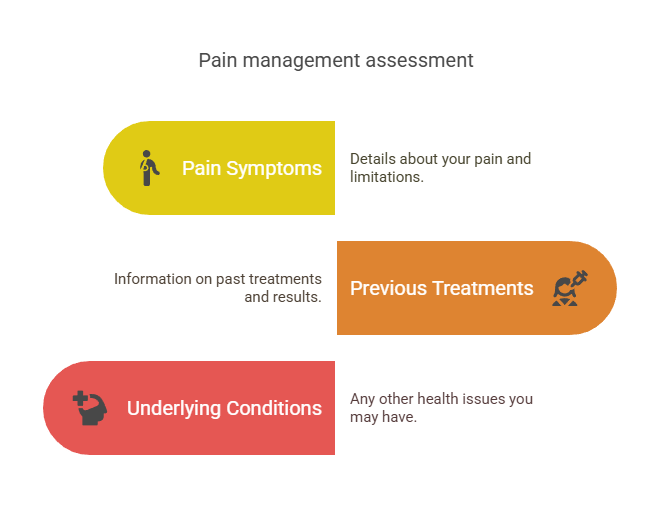
Initial Consultation and Assessment
First things first, you’ll have a thorough consultation. This isn’t just a quick chat; it’s a deep dive into your medical history, current condition, and treatment goals. The regenerative medicine clinic near me will want to understand everything to see if you’re a good fit. Expect questions about:
- Your current pain symptoms and the way they limit your daily functioning.
- Previous treatments you’ve tried and their outcomes.
- Any underlying health conditions you have.
They’ll usually assess you physically and might use tools like MRIs or X-rays to see what’s happening beneath the surface.
The Treatment Procedure
Okay, let’s talk about the actual procedure. While specifics vary depending on the type of regenerative medicine near me\t being used, here’s a general idea:
- Preparation: The treatment site will be thoroughly cleaned and prepared before the procedure begins. Sometimes, a local anesthetic is used to minimize discomfort.
- Cell Delivery: The regenerative cells (whether they’re stem cells, platelet-rich plasma (PRP), or something else) are carefully injected into the targeted area. The injection might be guided by ultrasound or other imaging to ensure precision.
- Post-Injection Care: After the injection, you’ll likely have some specific instructions to follow. This could include resting the area, avoiding certain activities, or applying ice.
Recovery and Rehabilitation
Recovery isn’t instantaneous. It’s a process that takes time and patience. You may notice some mild discomfort, swelling, or bruising where the injection was given. This is normal and usually subsides within a few days.
Here’s what the recovery timeline might look like:
- First Few Days: Focus on rest and following your provider’s instructions.
- Weeks 2-8: You’ll likely start to notice gradual improvements in your pain levels and function. You may be advised to do physical therapy to boost strength and restore movement in the area.
- Months 3-6: Continued healing and regeneration occur. You should see further improvements during this time.
Keep in mind that individual results with regenerative cell therapy can vary. Some people experience significant relief within a few weeks, while others may take several months to see noticeable results. Open communication with your medical team and a realistic mindset can help you get the best results.
Follow-Up Appointments
Regular follow-up appointments are key. These allow your provider to monitor your progress, assess how well the treatment is working, and make any necessary adjustments to your care plan. Don’t skip these appointments – they’re an important part of ensuring the best possible outcome.
Who Benefits Most from Regenerative Cell Therapy in My Local Area?
Figuring out if you’re a good fit for regenerative cell therapy is a big deal. It’s not a one-size-fits-all kind of thing. Doctors look at a bunch of factors to see if it’s likely to help you out. Let’s break down who might benefit the most.
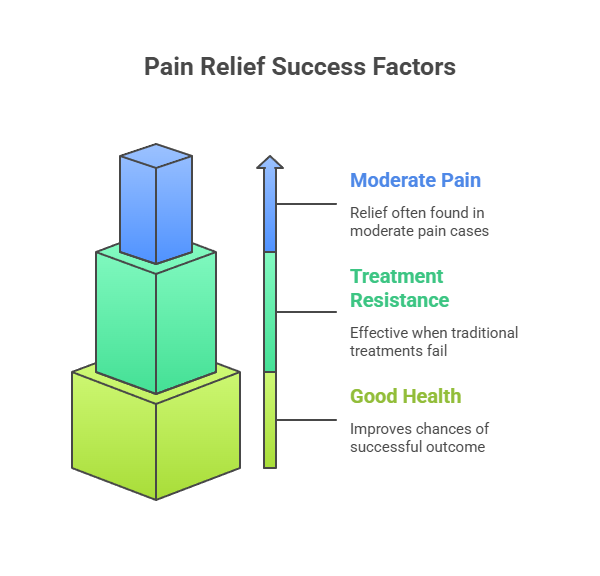
Generally, people who haven’t had success with traditional treatments are often considered. If physical therapy, medications, or injections haven’t given you the relief you need, regenerative cell therapy might be an option. It’s also important to have realistic expectations. This isn’t a magic bullet, but it can significantly improve your quality of life.
It’s worth noting that age isn’t always a deciding factor. While younger patients might see faster results, older adults can still experience significant benefits. The key is your overall health and the specific condition being treated.
Here are some common traits of good candidates:
- Moderate Pain Levels: People experiencing moderate, persistent pain often find the most relief.
- Limited Response to Traditional Treatments: If other treatments haven’t worked, this could be a good next step.
- Overall Good Health: Being in generally good health improves the chances of a successful outcome.
It’s also important to consider conditions that might make you a less ideal candidate. People with certain autoimmune diseases, active infections, or severe bleeding disorders might not be suitable. A detailed medical exam helps decide whether stem cell therapy is a safe and suitable option for your arthritis.
How to Choose the Best Provider for Regenerative Cell Therapy Near Me
Finding the right provider for regenerative cell therapy is a big deal. You need an expert who truly understands the treatment and knows how to get real results. It’s not just about finding the closest clinic; it’s about finding the right clinic.
Credentials and Experience
First off, check their credentials. Are the doctors board-certified in relevant fields like pain management, sports medicine, or regenerative medicine? How long have they been doing regenerative cell therapy? Experience matters a lot in this field. Experience matters—you need someone who’s handled many cases and can adapt to your unique situation. Don’t be afraid to ask about their training and certifications. It’s your health, so you have every right to be thorough.
Types of Regenerative Cell Therapies Offered
Not all regenerative cell therapies are created equal. Some clinics might only offer one or two types, while others have a wider range. Make sure the clinic offers the specific type of therapy that’s best suited for your condition. For example, if you have knee pain, you might want to look for a clinic that specializes in regenerative cell therapy for joints. Ask about the source of the cells they use (e.g., bone marrow, adipose tissue) and the methods they use to process them.
Patient Success Stories
What are other patients saying about their experience? Check online reviews on sites like Google, Healthgrades, or Zocdoc. Look for patterns in the reviews. Are patients generally happy with the results? Do they feel like the staff is caring and attentive? While reviews aren’t everything, they can offer helpful insight into other patients’ experiences. Also, ask the clinic if they can provide testimonials from past patients. Hearing directly from someone who has gone through the treatment can be really helpful.
Consultation Process and Personalized Treatment Plans
The initial consultation is your chance to get to know the provider and see if they’re a good fit for you. Does the doctor take the time to listen to your concerns and answer your questions? Do they explain the treatment process in detail? The right provider takes time to fully evaluate your health and design a plan that fits your unique situation.
It’s important to remember that regenerative cell therapy isn’t a magic bullet. Keep in mind that individual responses can differ, and success isn’t the same for everyone. A good provider will be upfront about this and will help you understand whether you’re a good candidate for the treatment.
Cost and Financing Options
Regenerative cell therapy can be expensive, and it’s often not covered by insurance. Find out the total cost of the treatment upfront, including any additional fees for consultations, follow-up appointments, or other services. Don’t hesitate to inquire about monthly payment plans or financial assistance. Some clinics may also offer discounts for certain patients, such as veterans or seniors. Make sure you understand the payment terms and what’s included in the price before you commit to anything.
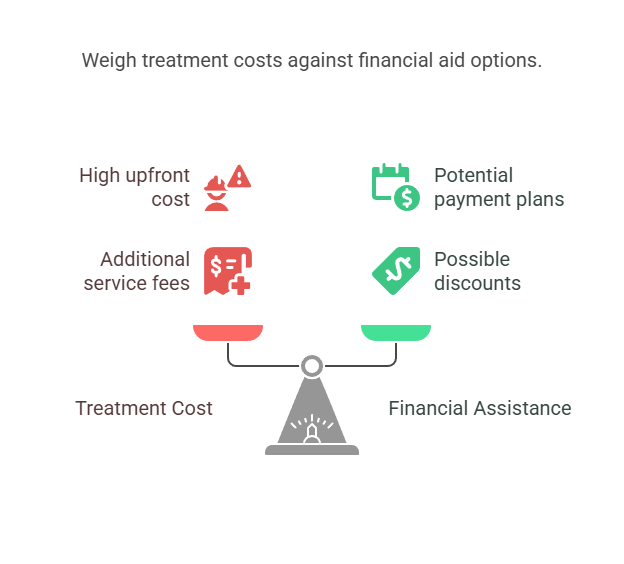
Wrapping Things Up
So, when you’re looking into regenerative cell therapy for pain, remember there are good options out there. Places like Waters Edge Medical Clinic & Spa and QC Kinetix are doing some interesting things with these treatments. They’re trying to help your body heal itself, which is a different approach than just covering up the pain. It’s not a magic fix for everyone, and results can be different from person to person. But for many, it’s a way to get back to feeling better without surgery or a lot of medication. It’s worth looking into if you’re dealing with ongoing pain and want to explore other possibilities.
Frequently Asked Questions
What is regenerative cell therapy?
Regenerative cell therapy is a medical approach that uses the body’s own cells to help heal damaged tissues and reduce pain. It works by taking healthy cells, often from your blood or fat, and placing them into areas of your body that are injured or hurting. These cells then assist in repairing the damage and calming inflammation, which can lead to lasting pain relief. This method is different from simply masking pain with medicine; it aims to fix the problem at its source.
Who can benefit from regenerative cell therapy?
Many people with ongoing pain or injuries can be good candidates for regenerative cell therapy. This includes individuals suffering from joint pain, back pain, nerve damage, or injuries to tendons and ligaments. It’s often considered when other treatments haven’t worked or when someone wants to avoid surgery. However, whether it’s right for you depends on your specific health situation, and before starting, your doctor must evaluate your condition to ensure the treatment is safe and effective for you.
How do I choose a good regenerative cell therapy provider?
Choosing the best provider involves looking for a clinic with experienced doctors who specialize in regenerative medicine. It’s important to find a place that offers a variety of regenerative treatments, like PRP therapy or stem cell therapy, and tailors the plan to your specific needs. Look for clinics that prioritize patient care and have a clear process for assessing your condition and explaining what to expect from the treatment. Reading patient reviews and asking about their success rates can also be helpful.
If you have any additional questions or if you would like to see if regenerative medicine is right for you, please contact us at Waters Edge Medical Clinic 727-550-0855 and receive a free consultation and evaluation.

